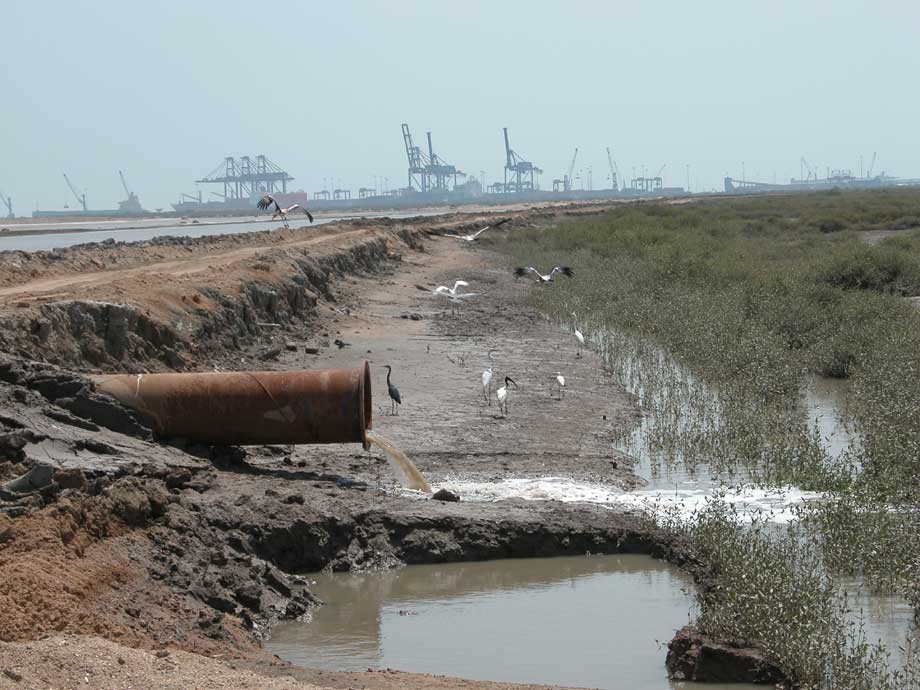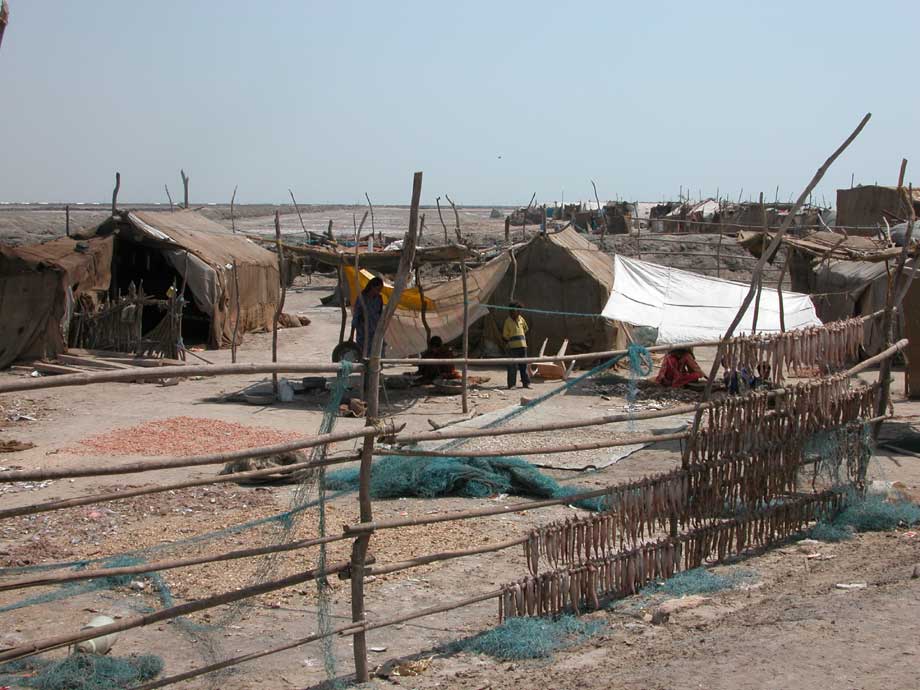Gujarat: Politics of “Development” or Politics of “Erasures”?
By Mitul Baruah
29 May, 2014
Countercurrents.org
If chai was our national addiction previously, the 2014 election has changed it. Now our new addiction is to a chaiwala called Narendra Modi, at least that is what appears from the unprecedented coverage of Modi and his politics in Indian media. But because any addiction has serious long-term consequences, it is important that we do some critical reflection about this one now before it is too late. In what follows, I demonstrate how, contrary to the popular rhetoric of “development”, Modi’s politics is a politics of “erasures” – one that erases ecologies, social fabric, certain histories, and diversity.
The “Gujarat model” of development and socio-ecological erasures
While the BJP/Modi PR machinery has made the so-called “Gujarat model” seem like a new development paradigm, several scholars have already demonstrated that the Gujarat model is a myth. Jean Drèze, for example, demonstrates how the “Gujarat model” is actually a case of “Gujarat middle”, as some of the southern states have consistently performed better than Gujarat in GDP as well as various ‘human development’ indicators (see Jean Dreze, The Hindu, May 10, 2014). But even if we consider this “middle” as a “model”, it is relevant to examine what this “model” is all about. Based on a careful reading of the Modi supporters’ claims and my first-hand experience of engaging with NGOs in Gujarat, I fail to see anything novel about the so-called “Gujarat model”. Instead, the Gujarat model of development or Modinomics, much like Manmohanomics, is a classic on-the-ground translation of neoliberalism – one that is characterized by, among others, rampant privatization, free markets, de-regularization, re-scaling of the state, and uneven development; all of these guided by the principles of “efficiency” and “[individual] freedom” (see David Harvey’s A Brief History of Neoliberalism for more details).

Mundra - showing an active process of de-watering of mangroves to dry up those areas and build SEZ (photo- author)

Mundra- temporary settlements of displaced fishing communities (photo- author)
The socio-ecological costs of such a model are irreversible, as exemplified by the case of Adani port & SEZ in Mundra, Kutch. This largest private port in India and one of the largest SEZs in the country did not emerge out of a peaceful process, as the Modi-ites would want us to believe. Instead, it was a result of violent processes in which certain ecologies, social fabric, and local livelihoods were erased for ever. Massive swathes of mangroves were chopped off, drained out, and converted to SEZ (see pictures taken by this author in 2006), thereby erasing an entire ecological system. In the context of climate change and increased natural disasters, the role of the mangroves ecosystems along the coastal belt of the country is invaluable. But a “Gujarat model”, which best fits what many radical geographers describe as a process of “neoliberalization of nature”, prioritizes “private profit” over environmental concerns. Hence, it is not a coincidence that Gujarat was declared the most polluted state in the country in the Central Pollution Control Board’s 2010 report. At the same time, the violence caused on the social front was as astounding. As I had witnessed during my 2006 visit to Mundra, large-scale displacement of the fishing communities and the Maldharis took place and their ties with the traditional livelihoods were permanently severed. Worth remembering in this context is the fact that it was on the Adani group’s private flight that Modi had travelled the length and breadth of the country during the election campaign, which suggests us enough about the dirty side of neoliberal governance.
If there is one thing that qualifies the neoliberal development in Gujarat for a “model”, that is the intimate relationship between ‘development’ and ‘violence’ that the Gujarati state has successfully established, with the possibilities of its replication at the national level now. Neoliberal development and violence are not separate processes; rather they are dialectically linked, and the Gujarat model stands as the best proof of it. Thus, what happened in Gujarat in 2002 was both a part of and a way towards a violent process of development: one that had very successfully erased the vital issues of inequities, exploitation, and rights from the agendas of popular discourse, and had, instead, constructed a different reality. “Communal divide” is the new real. So, while the largest section of the population finds itself preoccupied with fighting the Muslim “other”, capital and a capitalist/neoliberal state find it most conducive to move ahead with their agendas. If this is the “model” we are aspiring for, we are certainly not heading towards “ache din” (good days).
Erasing histories
Growing up in Assam during the thick of the Assam student agitation and having lived there through a good part of the early phase of ULFA and the SULFA (i.e. surrendered ULFA), I had witnessed the messy role that the state can play in erasing certain histories, certain memories if that protects the state and its leaderships.
Too much bloodshed had happened in Assam during the student movement, with Nellie massacre being one of the darkest chapters in the history of Assam. However, once the agitation was over and Assam got a new government under the leadership of the erstwhile student leaders, the violent past was conveniently erased from popular discourses and the legal purview. In the 1990s, Assam went through another violent phase of “secret killing”. Selective killing of Assamese youth who were either directly involved in ULFA or were family members of ULFA cadres was carried out for a few years in the dark of the nights. A whole generation of Assamese children, much like the Muslim children of Gujarat in 2002 and the subsequent era, grew up with the nightmare of “gupta ghatak” (secret killers). Although there is no evidence of who the perpetrators were, it is an open secret that the whole operation of “secret killing” was carried out by some SULFA cadres, supported by the state. Once again, no investigation ever took place and no one was punished. While the families of the victims might be haunted every moment by the memories of those days, this phase, too, will be erased from public memories sooner or later.
Given such historical precedents, it is a matter of great concern as to how the case of Gujarat 2002 will unfold from now on and how that might impact communal harmony (and divide) in the country. Modi may be clean, at least thus far, in front of the law, but he still carries the baggage of 2002 and his critiques have argued persistently that Modi should be held responsible – directly or indirectly – for 2002 since the whole pogrom took place during his tenure as the CM. The critiques further believe that the Modi administration had manipulated the system to be able to avoid any charges. Whatever the truth may be, now that Modi occupies the highest office in the country and his party an absolute majority, the fear of erasing even the slightest trace of the Modi administration’s involvement in the 2002 pogrom was never higher. And with the rhetoric of “nationalism” and “anti-Bangladeshis” that the BJP election campaign has further popularized and deepened in the country, there are serious matters to worry.
In a nutshell, what is being popularized as a politics of “development” by the Modi supporters can be instead read as a politics of “erasures”. If there is a “Gujarat model”, it is about erasing ecologies, traditional livelihoods, social fabric, and, above all, certain histories. Finally, with the Sangh Parivar’s well-known stand on the questions of ‘Uniform Civil Code’, ‘Article 370’, and ‘Hindu Rashtra’, there is enough reason to fear that the very defining characteristic of India – its “diversity” – may soon be a thing of the past.
Mitul Baruah is a doctoral Candidate, Maxwell School of Citizenship and Public Affairs, Syracuse University, Syracuse, NY.
Comments are moderated

